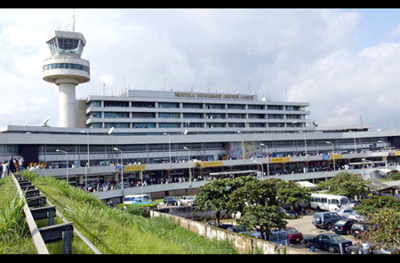CONSTANTLY living in denial, Nigeria’s aviation authorities have stridently debunked a new report that ranked the country’s leading airports as being among the worst in Africa. In its 2015 survey, Guide to Sleeping in Airports, a Canadian organisation, rated the airports in Port Harcourt, Abuja and Lagos as the first, seventh and 10th worst respectively in Africa. Considering that the survey is a continental initiative, the rebuttals are self-defeatist and meretricious.
The Port Harcourt International Airport in Rivers State has the dubious distinction of also being rated the worst in the world. It is not only about sleeping there, but about corruption, attitude of members of staff, comfort and other indices. Instead of vilifying the report, the Ministry of Aviation should scrutinise it and make fundamental changes where necessary. The weak defence of the Federal Airports Authority of Nigeria that the Port Harcourt airport is not the dirtiest because it is undergoing renovation is half of the story. Nigerians who use our airports attest to their poor state.
The assessment is a confirmation of the troubles plaguing the aviation sector in Nigeria. Under Stella Oduah as Aviation Minister, the past administration had controversially taken a $500 million loan in 2013 from the China EXIM Bank to “build four new international terminals and 11 cargo terminals.” Two years after, the airports are not better off. The projects centred mainly on re-modelling. At best, this was superficial, not fundamental enough to transform their outlook and operations. At plenary on Wednesday, concerned House of Representatives members alleged that the N400 billion appropriated for “the expansion, modernisation and management of 17 domestic and five international airports” under the Goodluck Jonathan government was mismanaged.
The survey, which was conducted among 26,297 international travellers, said, “Top complaints generally revolved around corruption, crowds, chaos, confusion and a total lack of cleanliness – five Cs an airport definitely does not want to be associated with. Amenities across the board are decidedly scarce if not entirely non-existent….” With Nigerian airports, nothing could be truer. Acts of impunity by government officials and the well-heeled constantly undermine operations.
The problems of Nigerian airports are systemic, affected by the wobbly nature of a state bedevilled by weak institutions, corruption and inefficient allocation of resources. Splurging $500 million on expensive reconstruction has not shown results or solved fundamental problems, which are legion. How do you fix an airport where air conditioners don’t work, where security agents demand bribes and government officials drive to the airside in violation of aviation rules? In question is the Murtala Muhammed International Airport, Lagos, with a dilapidated expressway as the access road. On both sides of the road are petrol tankers and unruly commercial motor drivers.
As expected, the survey has squelched the claims of Nigeria being the “giant of Africa.” The report lists South Africa’s Cape Town International Airport and Johannesburg Airport as the first and second in Africa. In third place is Algeria’s Hauri Boumediene, followed by Sir Seemoosagur in Mauritius and Kigali Airport, Rwanda.
The Changi International Airport, Singapore, has, in the past two decades, been rated as the best in the world and the 2015 survey gives a hint. It said, “Perhaps, it’s the extreme efficiency experienced when moving from the airplane to the city centre? Or maybe it’s the luxurious layover indulgences, which include a fish spa, a sauna, a butterfly garden, showers and a koi pond?”
When will our airports attain an excellent culture of efficient operations and service delivery? In the midst of the rot, and in our search for the appropriate solution, we need to remember that many governments across the world have had a similar experience with their airports. Many others are currently similarly encumbered.
So, what is the way out? Aviation experts propose two radical solutions, especially for airports with a minimum annual traffic of five million passengers. The first is full privatisation, while the second is leasing (concession). The Conservative government in Britain adopted the first model to a great success in 1987 by privatising the British Airports Authority, raking in $2.3 billion from the sale. In 2009, Heathrow and Stansted generated combined revenue of $4.27 billion.
The other workable model, which the government could consider, is partial privatisation or leasing. Examples here include the Charles de Gaulle Airport, Paris, France; and Frankfurt, Germany. While the airport in France generated $3.66 billion in 2009, the one in Germany receipted $2.74 billion. The Madrid Airport, Spain, which is in the process of privatisation, raked in $4.16 billion the same year.
As a result of the move to make airports viable, the Centre for Aviation, an Australian consultancy, estimates that there are currently “450 airports globally with some form of private-sector participation either in management or ownership.” Even Russia is jettisoning the state-run model, going by its 2014-2016 privatisation plan, which aims to cede operations at Moscow’s Sheremetyeva and Vnukovo airports completely to the private sector. It is obvious that the $500m loan has not been properly utilised and we welcome the House of Representatives’ decision to probe the transaction and demand an accounting.
We have not managed our airports efficiently as they remain a national embarrassment. And, the resources to do so are no longer readily available. But privatisation is an efficient way of managing infrastructure assets, and transparent privatisation will liberate the government from appropriating money annually for airport operations. A striking example of how privatisation can benefit the country is the N63.5 billion being expended on the second runway under construction at the Abuja airport. If our airports had been privately managed, the Federal Government would have been able to save this fund and deploy it to other critical social needs.
END


Be the first to comment